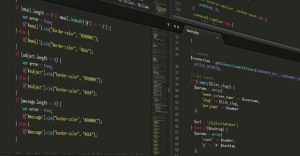Unlocking the Power of Data: A Beginner’s Guide to Elementary Statistics
So you’re diving into social research? Awesome! But let’s face it, numbers can feel like a whole new language. Fear not, gentle reader, because understanding elementary statistics is key to making sense of data and drawing meaningful conclusions from your research.
Think about it: you want to study the impact of political campaigns on voter turnout, right? You’re collecting data, which might involve age, income, education level, or even geographic location. But just gathering numbers isn’t enough. We need to understand how those numbers relate to each other and tell a story. That’s where elementary statistics comes in.
Elementary statistics are like the foundation of your social research building blocks. They’re the tools you use to explore, analyze, and make sense of your data. You can think about them as the language that connects your observations to a deeper understanding.
The Building Blocks: Key Concepts
Before we dive into the specifics, let’s look at some fundamental concepts that will serve you well in this journey:
- Descriptive Statistics:
- Think of descriptive statistics as a snapshot of your data. It helps us summarize and organize information, giving us an overview of what we’re dealing with.
- Common tools include: Mean, Median, Mode, Range, Standard Deviation, Percentiles, etc.
Inferential Statistics:
- This is where things get a bit more advanced. It involves going beyond the observed data and making predictions or generalizing about larger populations.
- It’s like looking at a single tree, not just its branches, to understand how it fits into an entire forest ecosystem.
Two key inferential tools you might encounter:
- Hypothesis Testing:
- It’s about testing our assumptions and finding out if the data supports a specific claim or hypothesis. It’s like saying, “Do these political campaigns actually influence voter turnout?” And then using statistics to see if we can answer that question with evidence.
Confidence Intervals:
- This tells us how confident we are in our findings. It’s like saying, “We’re pretty sure this political campaign influences turnout by X percentage. However, there might be some small chance it could influence turnout differently.”
Why Elementary Statistics Matter in Social Research
Think of elementary statistics as the eyes and ears of your research. They allow you to:
- Explore relationships between variables:
- You’re not just collecting numbers; you’re seeing how they relate! For instance, are there connections between income levels and political beliefs?
- Identify trends and patterns:
- By looking at the data, your research could reveal hidden patterns. Are there unexpected surges in voter turnout during certain election cycles?
Getting Started
You’re probably wondering about how to begin diving into this world.
- Take your first step:
- Start with the basics! Understand the difference between descriptive and inferential statistics. It’s like knowing if you want to build a house or learn how to plant a garden.
- Familiarize yourself with software:
- There are free and easy-to-use tools like R, SPSS, or even Excel. They can help you analyze your data.
Remember, learning statistics is a process! It might seem daunting at first, but don’t be discouraged. Start small, explore resources, and most importantly, enjoy the journey of uncovering the story hidden within your research!















